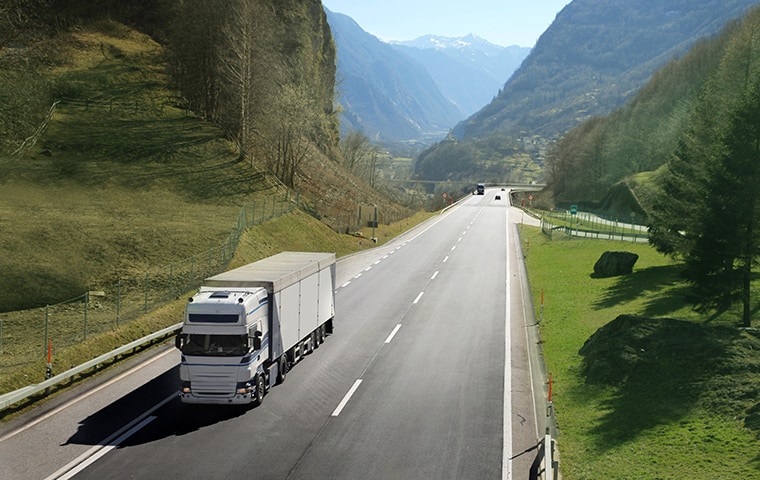Saving money is one of the biggest goals of any business. Nobody wants to run into huge costs that will hinder their ability to be profitable or productive. Fleet risk management is one way that fleet managers avoid costly payments towards medical bills, workers’ compensation, lawsuits, vehicle damage, or loss of revenue due to damaged vehicles or products. An accident can cost $16,500, and the cost skyrockets if there are any injuries or deaths. What is fleet risk management, and how does it help circumvent these costs?
What is Fleet Risk Management?
Fleet risk management is the practice of ensuring that fleets adhere to the highest level of safety. This process includes insurance risk assessment and developing, maintaining, and improving fleet risk management plans to reduce the company’s exposure to risky driver behaviors, mechanical failures, or other harmful conditions.
There are many reasons to focus on fleet risk management. Employees feel safer when they know that their employer is making every effort to make their workplace safe. Insurance companies often offer discounts to fleets that employ safety measures such as alarms, cameras, telematics, and dash cams. As mentioned previously, any accidents or incidents can cause significant delays in productivity, costing businesses thousands. Fleet risk management improves all of these situations and more, making it a must for any fleet.
Steps in Conducting a Fleet Risk Assessment
1. Identify the Hazards within the Job and Who They Might Harm.
The most obvious step in fleet risk assessment is determining the risks that your company faces. For a fleet, this could be any number of things.
Distracted Driving
Distracted driving is one of the most dangerous problems on the road. The CDC estimates that about eight people in the US are killed every day in accidents involving a distracted driver. Distractions occur when a driver takes their eyes off the road, their hands off the wheel, or their minds off driving. Therefore, texting while driving, eating while driving, or simply zoning out from boredom are all possible distractions that can lead to accidents.
Drowsy Driving
One problem that is prevalent in fleets is drowsy driving. With drivers on the road for long hours and at all hours of the night, it is easy to see how drowsy driving happens. Experts estimate that drowsy drivers cause 21% of fatal accidents. This number is staggering and goes to show how significant of a problem drowsy driving is.
Aggressive Driving
Hard braking, fast acceleration, speeding, and swerving are examples of aggressive driving that can cause accidents. This kind of driving is hazardous in a large fleet truck, which takes longer to stop than a smaller vehicle. It takes six seconds for a large truck to stop, during which time they will travel the length of two football fields. It is easy to see how this kind of driving can result in accidents, so drivers need to avoid it at any cost.
2.Establish How to Mitigate Risks
The most critical step is implementing safety measures to avoid these risks affecting the company. There are many safety features for fleets available to help mitigate these risks.
Telematics
Telematics sends data from a vehicle to a fleet manager to monitor and evaluate what a driver is doing in real-time and over time with detailed reports. This system can track information such as speed, location, fuel efficiency, hours of service (HoS), and more. Telematics systems have been proven to improve safety; some fleets have even seen up to a 50% reduction in accidents since implementing telematics.
Dashcams
Dashcams offer a major improvement to safety. Dual-facing dashcams such as Azuga’s SafetyCam can monitor the driver for signs of drowsy or intoxicated driving and alert the fleet manager to check in and see how the driver is doing. They can also catch distracted behaviors such as eating and drinking or using a cellphone while driving.
Maintenance Alerts and Checklists
Keeping vehicles in their best condition is vital to ensuring that they don’t have any issues on the road. With Azuga, fleets can set up maintenance alerts and create checklists to follow on pre- and post-trip inspections, so vehicles never have costly breakdowns on the go. These practices will save so much time not only in preventing accidents but also in productivity and efficiency.
3.Record Findings.
Continue to monitor the fleet after these changes are implemented and see if any additional hazards or problems arise. Make a note of any issues and create a report indicating how you plan to take care of them.
4.Update the Assessment.
Continually review the assessment and see what changes need to be made as time goes on. Make any necessary changes as required and keep thorough records of any improvements. It is crucial to keep the assessment up to date. Otherwise, the entire process becomes meaningless, and the company opens itself up to more risk.
Conclusion
Azuga has everything you need to mitigate your risks in the fleet business. From telematics to dash cams, we have the best technology available. Check out our website today to talk to an expert about your needs, or check out our blog to get more tips on keeping your company safe and productive.








